How the podcast ‘Hope & Dread’ examines the turmoil affecting art and artists
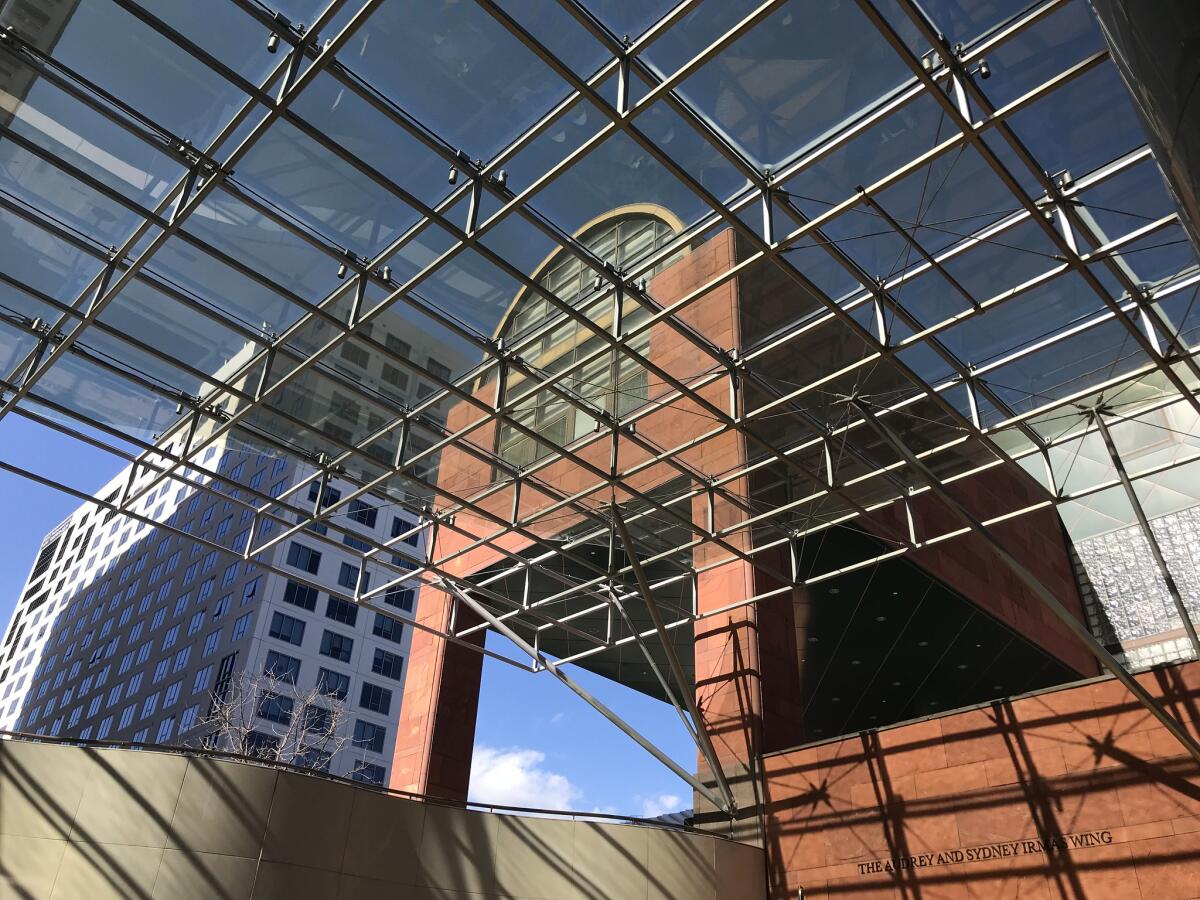
- Share via
It’s the weekend, which means nothing in this day of 24-7 doomscrolling. But at least there’s hot chicken to think about. I’m Carolina A. Miranda, arts and urban design columnist at the Los Angeles Times, with a bursting-at-the-seams newsletter. Strap in and hold on, because here’s what’s happening in the world of culture:
Art’s turmoil
In our era of tumult, museums have hardly been sites of exception. They have been the subject of protest over the sources of board wealth and there has been a rise in labor organizing at major institutions around the country. The pandemic and the uprisings of 2020 served to put some of these issues into stark relief — among them, the lack of diversity in curatorial ranks, leadership and boards, not to mention the yawning chasm between what those at the top earn versus what those at the bottom are able to eke out.
The Museum of Contemporary Art Los Angeles is a fitting avatar for some of these troubles: a museum with a troubled board and revolving door of leadership over the last 14 years. Last year alone, this included the departure of director Klaus Biesenbach (who had been in the seat for only three years) and senior curator Mia Locks, who in a departure email stated that museum management was “not yet ready” to embrace diversity and inclusion.
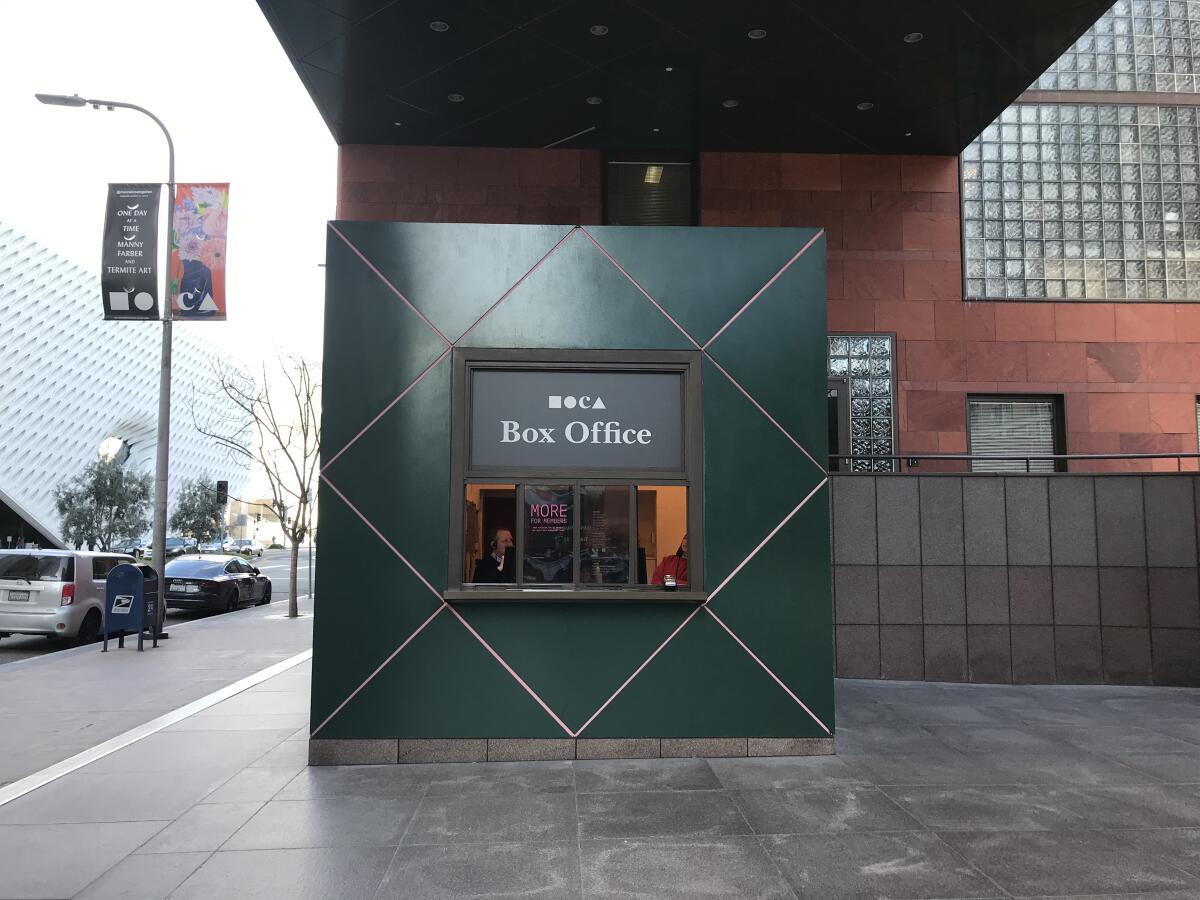
Amid this institutional churn, workers at MOCA announced plans to unionize in 2019 over concerns related to pay, hours and working conditions. The museum, to its credit, voluntarily recognized the union. But then the pandemic landed, and MOCA began to cut its low-earning part-time staff as if it were the Titanic ripping open its hull on an iceberg.
This, despite later being the recipient of $3.3 million in federal PPP loans. In fact, IRS 990 tax forms covering the 2019-20 fiscal year show that the museum ended that period almost $2.3 million in the black (something that was prominently noted in a recent report published by AFSCME, the labor union that represents MOCA employees, titled “Cultural Institutions Cashed In. Workers Got Sold Out”).
Three years out, the union is still attempting to bargain its first contract. At stake are issues of pay, as well as the growing gaps between the museum’s lowest-paid employee and its highest. The entry-level wage for a gallery attendant at MOCA is $16.50 per hour. When Biesenbach served as director, his annual salary was $1 million, a roughly $300,000 increase over previous director Philippe Vergne, according to the 990 tax forms.
I’m hazarding a good guess that lower-level staff positions have not seen increases on this scale ... well, ever. Also, here’s hoping MOCA’s new director, Johanna Burton, has achieved some sort of salary parity with the boys. If not, that board is going to have another flaming dumpster fire on its hands.
None of these issues are exclusive to MOCA. In fact, this is the labor picture at countless institutions across the country — all at a time in which billionaire wealth and museum endowments have soared.
Make the most of L.A.
Get our guide to events and happenings in the SoCal arts scene. In your inbox every Monday and Friday morning.
You may occasionally receive promotional content from the Los Angeles Times.
It is quite the fray — one that a new arts podcast, “Hope & Dread,” willingly steps into.
Hosted by arts journalist Charlotte Burns and art advisor Allan Schwartzman, the limited run series, which premiered in December, was made in consultation with an advisory board that includes Locks, who now helps lead Museums Moving Forward, an initiative focused on accountability in the museum field, as well as Deana Haggag, a program officer at the Mellon Foundation, and Jay Sanders, executive director and chief curator at New York’s Artists Space.
Burns, who regularly teams up with Artnet news editor Julia Halperin to publish the Burns Halperin Report, a data-driven analysis of where representation stands in the world of art, takes complex topics and makes them conversational. Schwartzman, who has worked as an art advisor more than three decades, offers historical context.
The editorial team has done a thorough job: interviewing scores of professionals throughout the art world — museum directors, board members, artists, curators, theorists — for episodes devoted to topics such as censorship and the removal of monuments. The latter episode, titled “American History, Axed,” features some highly dynamic airtime with LAXART’s Hamza Walker, who is currently organizing a show with artist Kara Walker aimed at reconsidering and recontextualizing Confederate monuments.
Of Lost Cause propaganda, Walker says: “What passes as history is no history at all.”
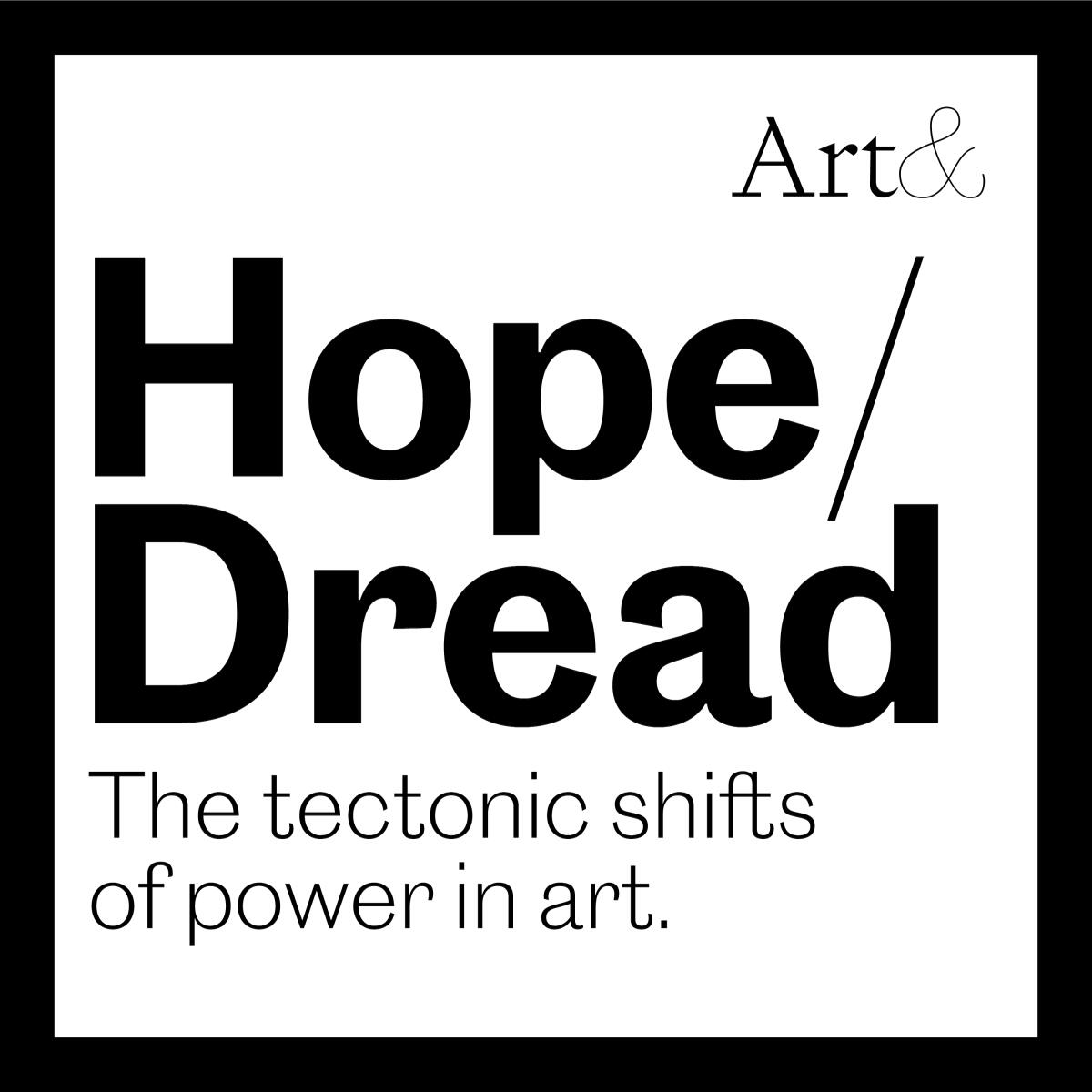
Several episodes are devoted to museums: examining, in depth, activism and labor and the role of directors and trustees. This includes insightful observations from figures such as Sandra Jackson-Dumont, the director and CEO of the Lucas Museum of Narrative Art; Naima Keith, who oversees the education department at LACMA; and Kelli Morgan, who teaches at Tufts University and runs the curatorial studies program there, and who has written and spoken frankly about the systemic racism embedded in museums — tied to her own experience at institutions such as the Indianapolis Museum of Art.
“I do all the interviews,” says Morgan. “One is to encourage people. You can say it. You can tell the truth and be OK.”
Perhaps most insightful are the conversations about where museums have failed and where they might be headed.
As Fred Bidwell, a collector and philanthropist who sits on the board of the Cleveland Museum of Art, says in the Feb. 9 episode devoted to the ways museums are organized and led: “They’ve been stuck in this very hierarchical 18th, 19th century model for museum management that’s been incredibly frustrating as it’s become more and more dislocated from contemporary reality.”
Locks, among other professionals interviewed, points to a future in which structures could be more horizontal and collaborative.
And the Feb. 23 episode, “Executive Session,” tangles with the role of boards. A paucity of government funding for the arts in the U.S., along with institutions that seem to be growing ever larger in scale, has left institutions at the mercy of wealthy board members. Larry Marx, who serves on the Hammer Museum’s board of trustees, says: “There is no governance of governors.... I can tell you the boards that I’m aware of, that very little thought is put into that. Are you really adhering to your governance and fulfilling the mission of the museum? Or really should the mission be changed?”
Occasionally, the podcast can delve into generalities. (In one episode, Schwartzman talks about how L.A. museums are being led by “progressive, thoughtful leaders who are right for their time” — without looking critically at what “progressive” might mean in largely Latino Los Angeles.) But the questions the podcast raises overall are good ones.
What to make of this moment of seismic change? “Hope & Dread” helps sort it out. Here’s hoping that MOCA — and all the other institutions out there — are listening.
Culture and the Ukraine invasion
As I write this, the Russian invasion of Ukraine is proceeding in all of its brutality. Russian forces have captured Kherson, a strategic port city of 300,000 that connects to the Black Sea, and have laid siege to Mariupol, which sits on the Sea of Azov to the east. On Friday, reports emerged that the Russians had seized the Zaporizhzhia nuclear plant, Europe’s largest.
For civilians, it has been devastation, as chronicled in this poignant image report by The Times.

Cultural patrimony has likewise fallen under fire.
On Tuesday, Ukrainian President Volodymyr Zelensky reported that a missile had struck in Kyiv in the vicinity of the Babi Yar Holocaust Memorial. (The memorial marks the site of a mass killing of nearly 34,000 Jews in 1941, when the city was under Nazi occupation.) Prior to that, a museum in Ivankiv (north of Kyiv), containing works by folk painter Maria Pryimachenko, went up in flames, reportedly as a result of Russian attacks.
Currently at risk are seven UNESCO World Heritage sites, including the St. Sophia Cathedral in Kyiv, which dates to the 11th century, and the historic city center of Lviv, which spans back to the Middle Ages. In a statement, the J. Paul Getty Trust’s James Cuno, said, “Cultural heritage has the power to unite us and is critical for achieving peace. It is also too often the target of war, another way to destroy and overtake a society by erasing its memory.”
I have a look at one important Ukrainian artifact site: Gorodetsky House, an absolutely unreal 1903 structure designed by flamboyant Polish-born architect Vladislav Gorodetsky that served as a key backdrop to one of President Zelensky’s most urgent social media posts: the one in which he dismissed rumors of his evacuation and declared, “I am here. We are not laying down our arms.” The building, which serves as a diplomatic gathering space for Ukraine’s leaders, features a fanciful facade studded with images of mermaids and animals. It has survived the Russian Revolution, World War II and the politics of the Cold War. Will it survive this one conflict?
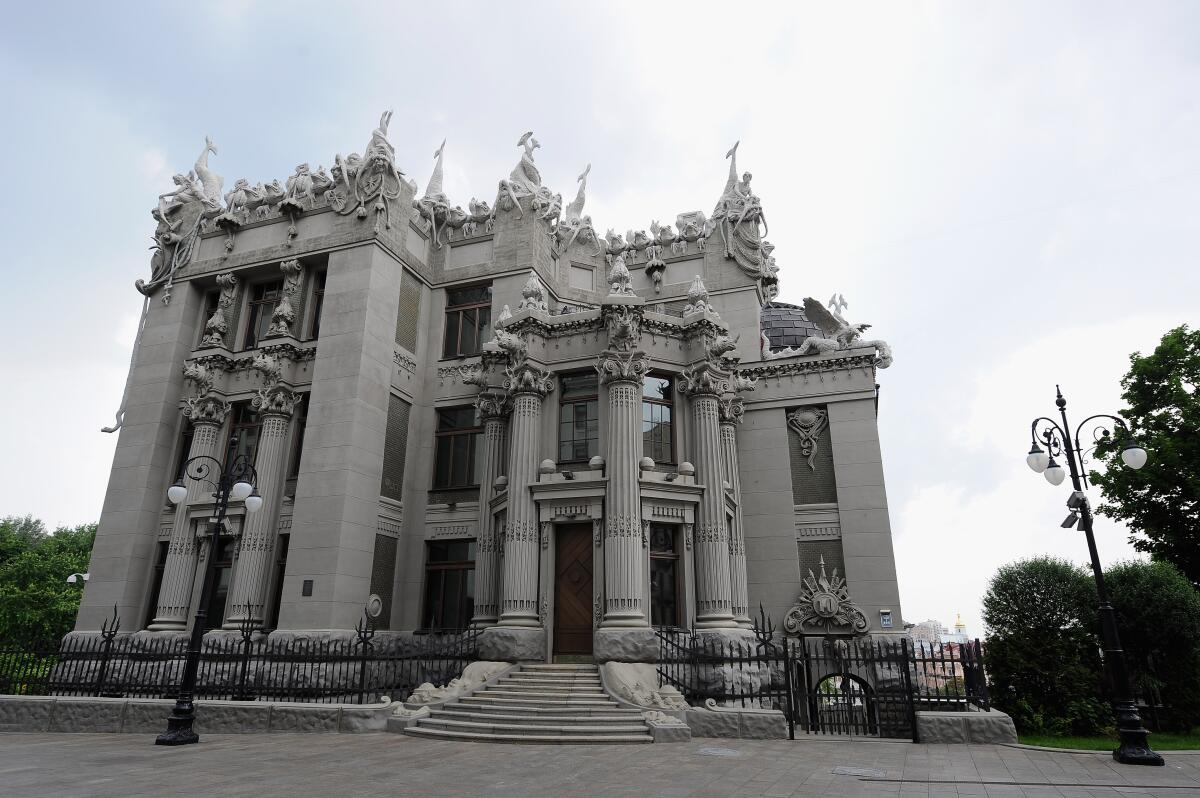
Naturally, the war has led to other ripples in the culture.
Lithuanian curator Raimundas Malašauskas and Russian artists Alexandra Sukhareva and Kirill Savchenkov have announced they will withdraw from Russia’s pavilion at the Venice Biennale. In addition, Moscow’s Garage Museum of Contemporary Art, has announced it will “stop work on all exhibitions until the human and political tragedy that is unfolding in Ukraine has ceased.”
In New York, soprano Anna Netrebko has withdrawn from future engagements with the Metropolitan Opera over her failure to repudiate Russian President Vladimir Putin and the invasion.
And Alex Ross at the New Yorker looks at how conductor Valery Gergiev has seen a storied career crumble due to his close relationship with Putin.
A pair of Russian magnates with ties to Putin — Vladimir Potanin and Petr Aven — resigned from the boards of New York’s Guggenheim Museum and London’s Royal Academy of Arts, respectively. And Britain’s Tate is facing calls to cut its ties to Viktor Vekselberg, who has been a target of U.S. sanctions since 2008. He is currently an honorary member of the Tate Foundation.
Sort of related: Curbed has a tour of oligarch-owned Manhattan real estate. Talk about gilded age.
Enjoying this newsletter? Consider subscribing to the Los Angeles Times
Your support helps us deliver the news that matters most. Become a subscriber.
In the world of architecture, some firms have put the brakes on ongoing projects in Russia, including David Chipperfield and Herzog & de Meuron. Over at {previous link was also to Archinect-BH}Archinect, writer Katherine Gulmapang looks at the ways in which architecture around the world has been deployed to offer visual support for Ukraine, with iconic structures the world over bathed in blue and yellow light — the colors of the Ukrainian flag. A gesture of solidarity or a “performative and hollow” act? “These illuminated structures are for the people of Ukraine,” she writes. “They are for the Ukrainian community that lives in your towns and neighborhoods.” (Also, thanks for the shout-out!)
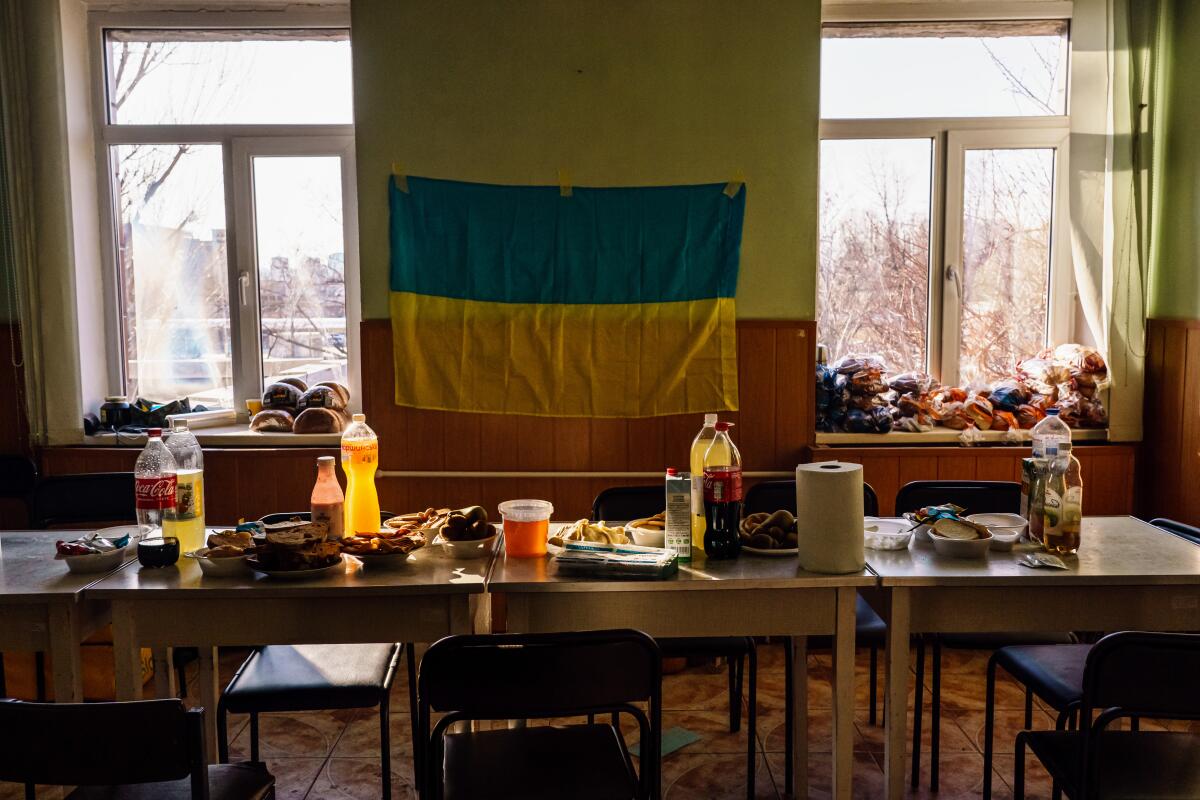
“Kyiv is being shelled, for the first time after the Second World War.” Writer and photojournalist Yevgenia Belorusets is keeping a war diary in Artforum.
And in his wonderful newsletter, Beautiful Eccentrics, artist and writer Pablo Helguera chatted with a pair of artists in Ukraine about the invasion: Dan Perjovschi, who produces stinging political drawings, and Zhanna Kadyrova, who repurposes the materials of architecture into objects that evoke worn human garments. She tells him: “I can’t think of the future right now. I am living day by day.”
The Art Newspaper rounds up the Instagram accounts of a group of international photographers who are on the ground in Ukraine. (It’s a good list but is missing The Times’ Marcus Yam.)
Olesia Ostrovska, director of Kyiv’s Mystetskyi Arsenal Art and Museum Complex, outlines five ways that the art world can help. Plus, The Times rounds up organizations in support of Ukrainians in the country, as well as refugees abroad.
To end on a more uplifting note: Here’s a beautifully illustrated guide to the Ukrainian avant-garde of the early 20th century.
Performance notes
“As long as we have prisons and government,” writes classical music critic Mark Swed, “and as long as profit and power remain factors in that equation, we do well to keep the warning of ‘Fidelio’ in our cultural employ.” Swed attended a performance of Beethoven’s opera by Heartbeat Opera at the Broad Stage — which took a story originally set in a 19th century Spanish prison and brought it to present-day U.S., where a Black intellectual activist has been imprisoned by a tyrannical governor. It is a work, he notes, that “does not flinch at the hard questions.”

Theater critic Charles McNulty in the meantime, checked out Rogue Machine’s production of Rogue Machine’s “On the Other Hand, We’re Happy,” which he describes as “one of those small-scale works that make city life such a pleasure.” Written by Welsh playwright Daf James, the story is centered on three characters linked by an adoption. “This is physical theater without the acrobatics,” he writes. “The psychology is unsensationally theatricalized.”
Plus, the L.A. Phil has announced its 2022-23 season lineup, which will celebrate Black women artists, the stories of women who lived during the California Gold Rush and classical music of the Americas.
In and out of the gallery
Cuban-born artist Enrique Martínez Celaya and his work have been materializing all over L.A.: at the Huntington Library, where he is a visual arts fellow,; at USC, where he not only teaches, but also is the subject of a solo show at the USC Fisher Museum of Art,; and at UTA Artist Space in Beverly Hills, where his exhibition “The Rose Garden” is on view through next week. Contributor Leah Ollman profiles the artist whose works are “driven by questions about his place in the world, memory’s role as the formative stuff of identity, the notion of home as an elusive sanctuary and more.”

Art critic Christopher Knight settled in for some Netflix and chill with the new documentary series “The Andy Warhol Diaries,” which is set to launch Wednesday. Most of what the series has to say about Warhol’s art, he reports, “is standard stuff ... which, frankly, often misses the actual point of the incisive Pop brand.” But the narrative arc, which unfolds like a series of love stories, is what makes the series worth watching. “Homosexuality in cruelly heteronormative American society during the decades after World War II is the documentary’s subject,” writes Knight, “framed by Warhol’s successes and failures in love.”
Knight has also been immersing himself in Van Gogh — not a Van Gogh experience, but a museum exhibition of real-deal Van Goghs. (It can be done!) “Through Vincent’s Eyes: Van Gogh and His Sources” at the Santa Barbara Museum of Art explores the sources that inspired the Dutch painter’s work. This isn’t a show of masterpieces, writes Knight, “it’s a show about how artists actually work.”
A new work of public art is now illuminating L.A.’s 3rd Street Tunnel, reports Deborah Vankin. “The Light at the End of the Tunnel — Heart of Los Angeles” by neon artist Tory DiPietro is “arguably L.A.’s most earnest piece of public art,” she writes. A glowing heart ensconced in a luminescent rainbow of neon that now lights the exit to the rather grim piece of transit infrastructure that pierces Bunker Hill.
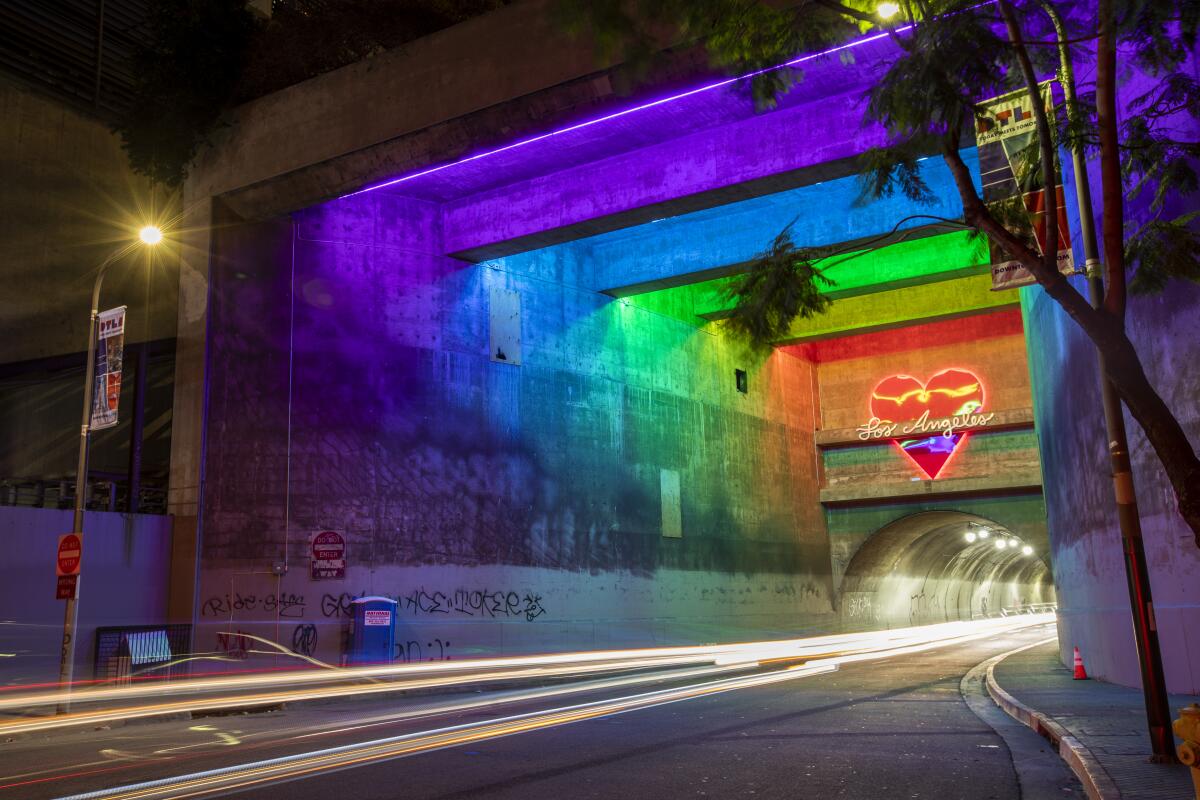
Another good mood boost is Jessica Gelt’s story about Percy the Porcupine, a two-story puppet commissioned by the San Diego Zoo. He is inspired by Boris, a real porcupine, and was fabricated by Jim Henson’s Creature Shop in Burbank. Gelt got to see Percy unveiled to a group of kids in Elysian Park — and the event involved plenty of cheering and squealing.
Everything dance
The late Blondell Cummings fused movement and video in experimental work that defied conventions of dance. Her legacy now receives consideration in the first monograph dedicated to her work: “Blondell Cummings: Dance as Moving Pictures” by X Artists’ Books. This was accompanied by an exhibition of her work at Art + Practice. Contributor Danielle Broadway describes an artist whose work “reflected a Black aesthetic vocabulary while defying traditions of white modern dance.”
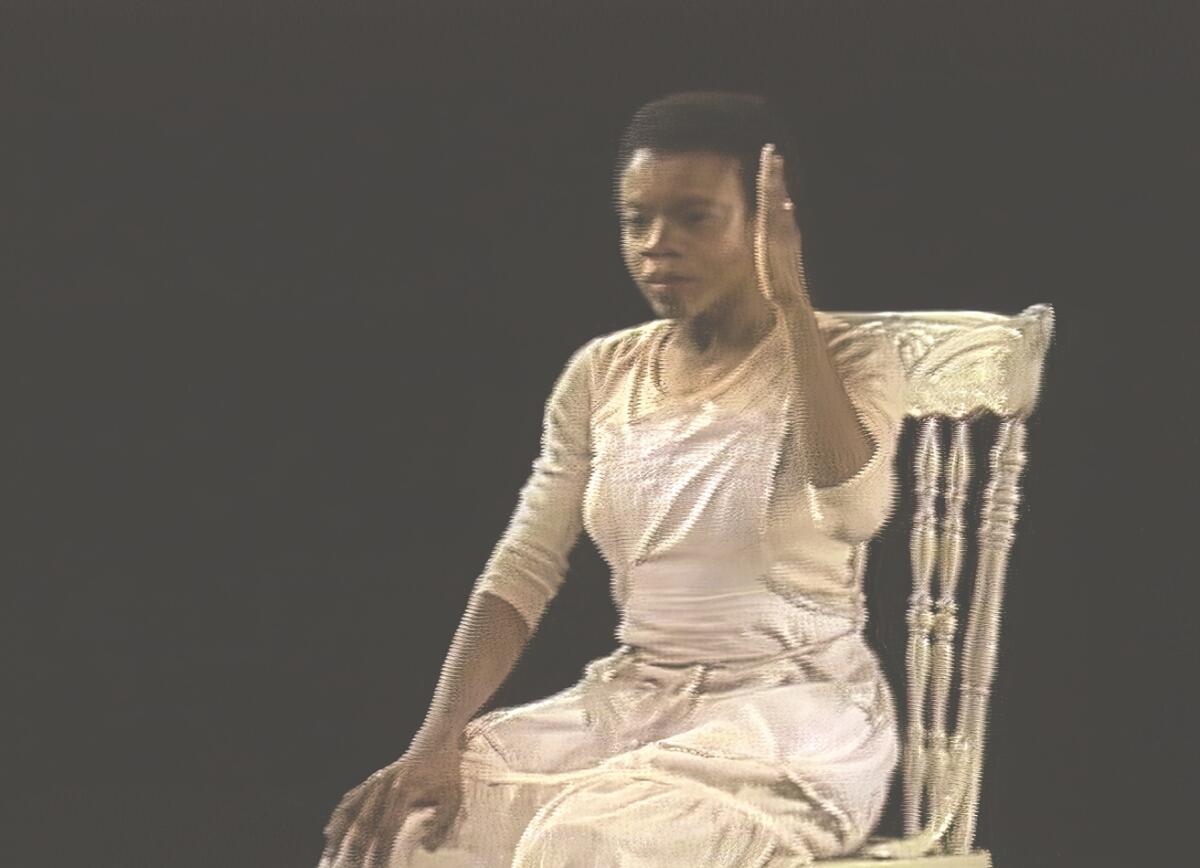
Essential happenings
Matt Cooper rounds up the nine best bets for the weekend, including “Rapunzel Alone,” a reimagining of the classic fairy tale set amid World War II at the Wallis, and a pair of works by dancer-choreographer Ronald K. Brown at Royce Hall, courtesy of CAP UCLA.
He also rounds up a batch of new art shows, including a new show of work by astute collagist Deborah Roberts at the California African American Museum and a show devoted to the art of the ramen bowl at Japan House Los Angeles.
There are some gangbusters exhibitions going on in downtown L.A.. These include large-scale installations by Gary Simmons and Phyllida Barlow at Hauser & Wirth (both of which are on view into May). Barlow, an artist known for repurposing humble materials such as cardboard and plywood into explosive forms, has taken over the South Gallery with an architectonic installation rife with seismic energy — like a theater proscenium come to destructive life. Do not miss.

Passages
Dan Graham, a conceptual artist who embraced various modes of art-making to their fullest — including, sculpture, video, architecture and even puppetry — is dead at 79.
Barry Bauman, a paintings conservator who made headlines when he figured out that a portrait long thought to be of Mary Todd Lincoln was in fact a fake, has died at 73.
In other news
— Michael Tilson- Thomas for the first time speaks publicly about the aggressive cancer that led the conductor to withdraw from public appearances last year. The cancer is in check, he writes, but “the future is uncertain,” so he will step down as artistic director of Miami’s New World Symphony.
— Someone has been making off with pieces of an artwork by Beatriz Cortez at Pitzer College that pays tribute to Indigenous astronomical practice. For shame!
— SFMOMA has landed a collection of nearly 350 works and a $10 million unrestricted gift from the estate of collectors Norman Stone and Norah Sharpe Stone, which includes pieces by Marcel Duchamp, Diane Arbus and Carrie Mae Weems.
— Because too much apocalypse is never enough: Beeple now operates a studio with 16 employees and just had a star-studded Manhattan gallery show.
— Terrible Morphosis building in West Hollywood will be replaced by terribly bland Arquitectonica building.
— An exploration of the Karen meme.
And last but not least ...
Just to bring the whole chicken theme full circle: Marina Abramovic, but with hot sauce and chicken wings.
The biggest entertainment stories
Get our big stories about Hollywood, film, television, music, arts, culture and more right in your inbox as soon as they publish.
You may occasionally receive promotional content from the Los Angeles Times.




